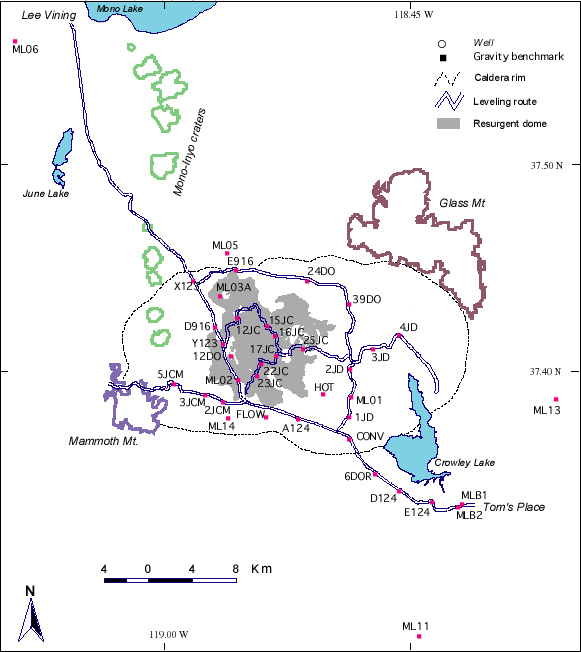

|
|
|
Figure 1. Long Valley gravity network. The
network base station is MLEQB2 (Tom's Place). MLE06 (Lee
Vining), MLEQ11 (Rock Creek) and MLEQ13 (Benton Crossing) are the
network control stations.
[Back] |
Figure 2. (a) Gravity changes from 1982
to 1999, values in mGal, error 1 St Dev; the gravity change reported
here is the average of the 1999-82 and 1998-82 measured
gravity changes (see Figure 5), corrected for fluctuations in the
water table. (b) Uplift at gravity benchmarks from 1982 to 1999,
values in mm, error 1 St Dev. (c) Residual gravity from 1982 to 1999,
values in in mGal, error 1 St Dev. The white outline at the center
of the caldera is the resurgent dome.
[Back] |

Figure 3. The author (M. Battaglia) measuring
gravity at the Tom's Place base station with a LaCoste-Romberg
G8 meter (July 1999)
[Back] |
|